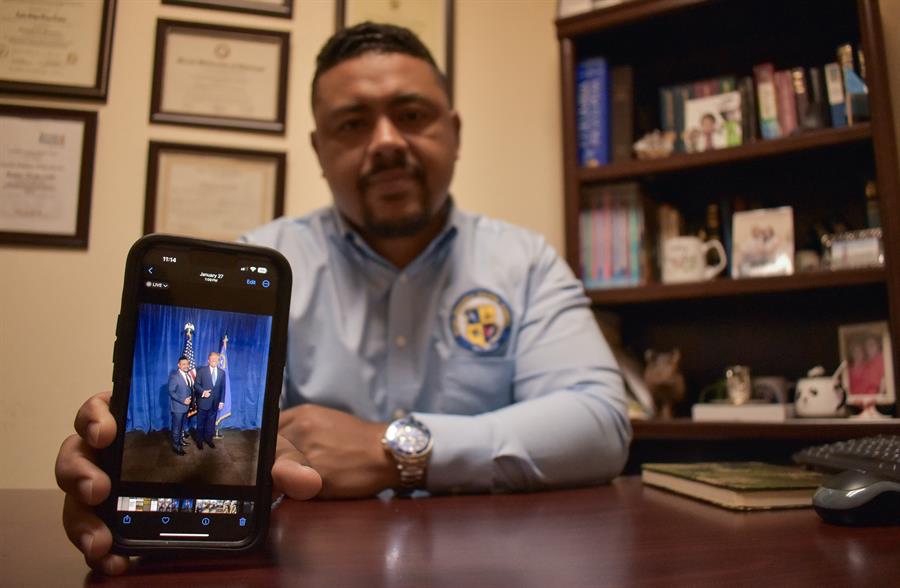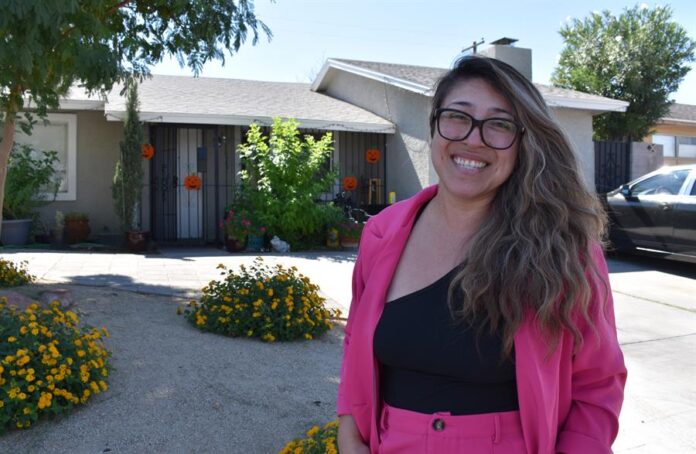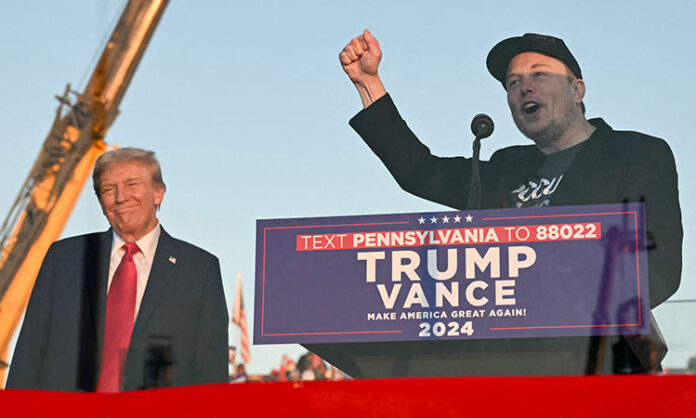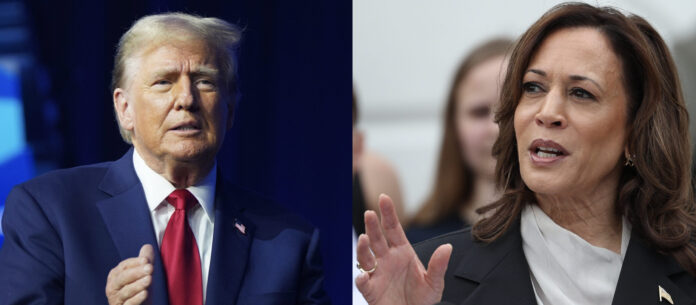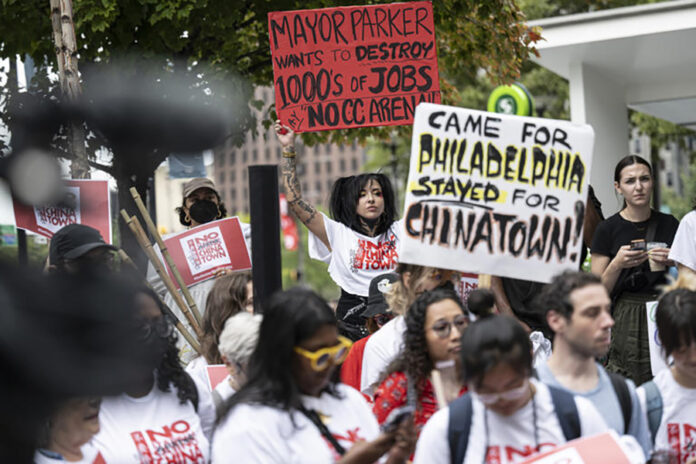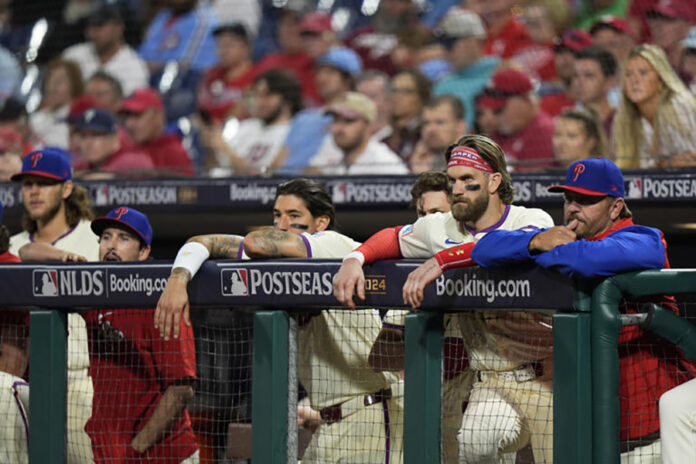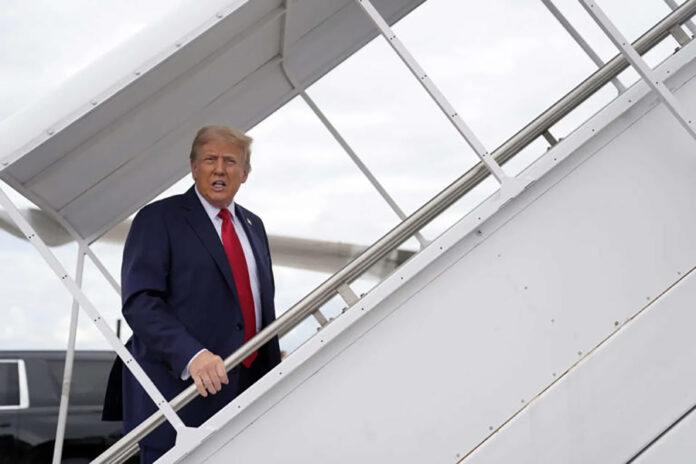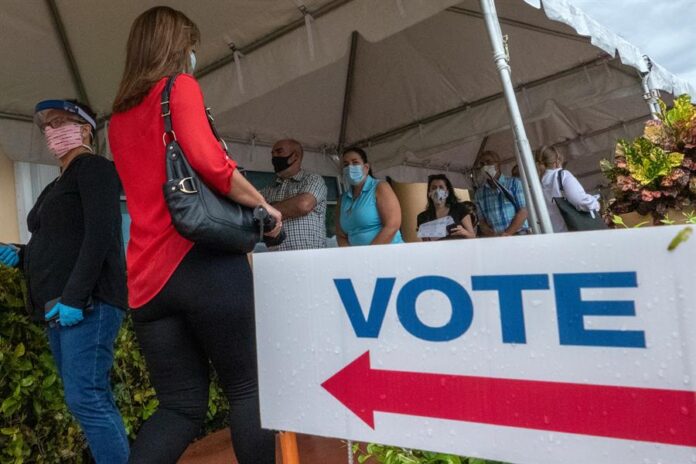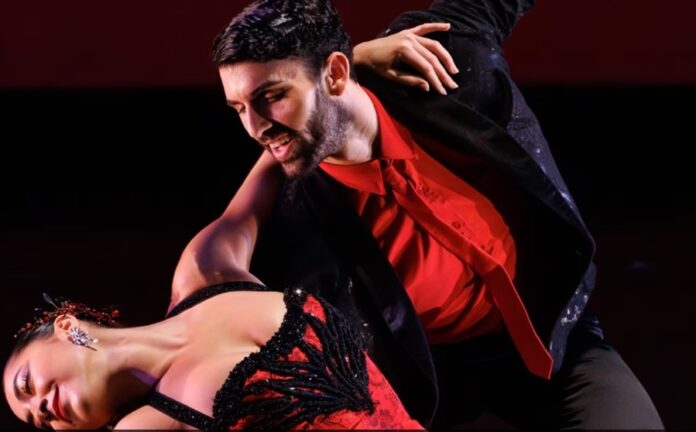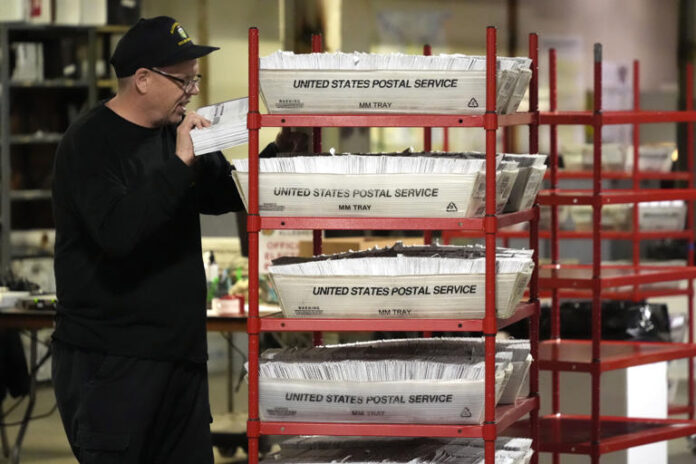BUTLER, Pa.— Donald Trump returned on Saturday to the Pennsylvania fairgrounds where he was nearly assassinated in July, urging a large crowd to deliver an Election Day victory that he tied to his survival of the shooting.
The former president and Republican nominee picked up where he left off in July when a gunman’s bullet struck his ear. He began his speech with, “As I was saying,” and gestured toward an immigration chart he was looking at when the gunfire began.
“Twelve weeks ago, we all took a bullet for America,” Trump said. “All we are all asking is that everyone goes out and votes. We got to win. We can’t let this happen to our country.”
The Trump campaign worked to maximize the event’s headline-grabbing potential with just 30 days to go and voting already underway in some states in his race against his Democratic opponent, Vice President Kamala Harris. Musician Lee Greenwood appeared on stage and serenaded him with “God Bless the USA,” frequently played at his rallies, and billionaire Elon Musk spoke for the first time at a Trump rally.
“We fought together. We have endured together. We have pushed onward together,” Trump said. “And right here in Pennsylvania, we have bled together. We’ve bled.”
At the beginning of the rally, Trump asked for a moment of silence to honor firefighter Corey Comperatore, who died as he shielded family members from gunfire in July. Classical singer Christopher Macchio sang “Ave Maria” after a bell rung at the same time that gunfire began on July 13. Several of Comperatore’s family members were in attendance, including his widow, Helen, who stood during Trump’s remarks next to the former president’s daughter-in-law, Lara Trump.
Standing behind protective glass that now encases the stage at his outdoor rallies, Trump called the would-be assassin “a vicious monster” and said he did not succeed “by the hand of providence and the grace of God.” There was a very visible heightened security presence, with armed law enforcers in camouflage uniforms on roofs.
Trump honored Comperatore and recognized the two other July rallygoers injured, David Dutch and James Copenhaver. They and Trump were struck when 20-year-old shooter Thomas Matthew Crooks of Bethel Park, Pennsylvania, opened fire from an unsecured rooftop nearby before he was fatally shot by sharpshooters.
The building from which Crooks fired was completely obscured by tractor-trailers, a large grassy perimeter and a fence.
How Crooks managed to outmaneuver law enforcement that day and scramble on top of a building within easy shooting distance of the ex-president is among many questions that remain unanswered about the worst Secret Service security failure in decades. Another is his motive.
Pennsylvania is critical to both presidential campaigns
Trump lost Pennsylvania four years ago after flipping it to the Republican column in 2016. He needs to drive up voter turnout in conservative strongholds like Butler County, an overwhelmingly white, rural-suburban community, if he wants to win Pennsylvania in November after losing it four years ago. Harris, too, has targeted her campaign efforts at Pennsylvania, rallying there repeatedly as part of her aggressive outreach in critical swing states.
“Pennsylvania, clearly, is going to be the center of the universe for the next 30 days, for both sides, and we’re pretty bullish on where we are here organizationally, politically, and in terms of the resources that we’ve been able to commit here,” campaign senior adviser Chris LaCivita told reporters.
Trump highlighted Harris’ previous stance against fracking, a process of producing natural gas key to Pennsylvania’s economy, like he has done in the past. But then, he continued to spread falsehoods about the federal response to Hurricane Helene, further spreading a claim floating around that disaster survivors are only getting $750 from the Federal Emergency Management Agency. That figure refers to help the agency can give someone in an affected area for what they might need immediately.
Trump also claimed Harris had “lost more than 325,000 migrant children that are now dead, in slavery or just plain missing.” An August report from a government watchdog said those were cases where immigration officials were faulted for failing to consistently “monitor the location and status of unaccompanied migrant children” once they are released from federal government custody. Those figures also covered more than two years of the Trump administration.
Elon Musk made an appearance
One of the most anticipated guests of the evening was Musk, the CEO of SpaceX and Tesla and owner of X, formerly Twitter. Musk climbed onto the stage on Saturday jumping and pumping his fists in the air after Trump introduced him as a “great gentleman” and said he “saved free speech.”
“President Trump must win to preserve the Constitution. He must win to preserve democracy in America,” said Musk, who endorsed Trump after the assassination attempt. “This is a must-win situation.”
Musk, who has embraced conservative politics and is funding get-out-the-vote efforts for Trump in several swing states, met with Trump and his running mate, Ohio Sen. JD Vance, backstage, donning a black “Make America Great Again” hat. A billboard on the way into the rally said, “IN MUSK WE TRUST,” and showed his photo.
Earlier on Saturday, Vance got on stage and reflected on the events that day while severely criticizing Democrats for calling Trump “a threat to democracy,” saying that kind of language is “inflammatory.»
«You heard the shots. You saw the blood. We all feared the worst. But you knew everything would be OK when President Trump raised his fist high in the air and shouted, ‘Fight, fight!’» said Vance, who was chosen as his vice presidential nominee less than two days later.
Rallygoers said they felt secure coming back to Butler
Crowds were lined up as the sun rose Saturday. A large crowd packed bleachers, folding chairs and the expansive field stretching to the venue’s edges. Area hotels, motels and inns were said to be full and some rallygoers arrived Friday. Much of the crowd waited several hours for Trump. About half an hour into his speech, Trump paused his remarks for more than five minutes after an attendee had a medical issue and needed a medic.
Butler County, on the western edge of a coveted presidential swing state, is a Trump stronghold. He won the county with about 66% of the vote in both 2016 and 2020. About 57% of the county’s 139,000 registered voters are Republicans, compared with about 29% who are Democrats and 14% something else.
Chris Harpster, 30, of Tyrone, Pennsylvania, was accompanied by his girlfriend on Saturday as he returned to the scene. Of July 13, he said, “I was afraid” — as were his parents, watching at home, who texted him immediately after the shots rang out.
Heightened security measures were making him feel better now, as well as the presence of his girlfriend, a first-time rallygoer. Harpster said he will be a third-time Trump voter in November, based on the Republican nominee’s stances on immigration, guns, abortion and energy. Harpster said he hopes Pennsylvania will go Republican, particularly out of concern over gas and oil industry jobs.
Other townspeople were divided over the value of Trump’s return. Heidi Priest, a Butler resident who started a Facebook group supporting Harris, said Trump’s last visit fanned political tensions in the city.
“Whenever you see people supporting him and getting excited about him being here, it scares the people who don’t want to see him reelected,” she said.
Terri Palmquist came from Bakersfield, California, and said her 18-year-old daughter tried to dissuade her from traveling. “I just figure we need to not let fear control us. That’s what the other side wants is fear. If fear controls us, we lose,” she said.
She said she was not worried about her own safety.
“Honesty, I believe God’s got Trump, for some reason. I do. So we’re rooting for him.”
